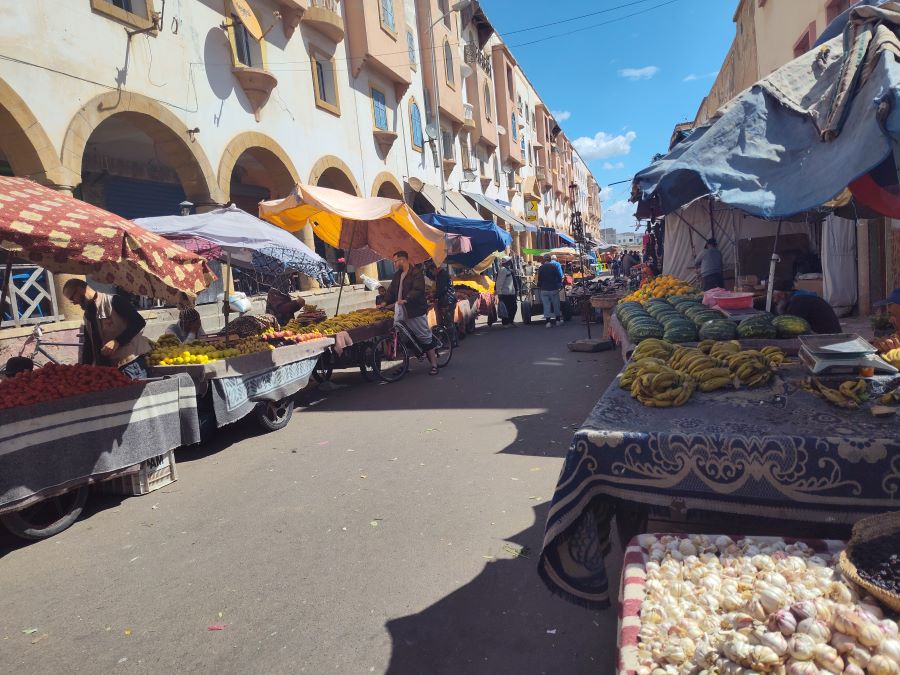Essaouira things to see
In this post, I explore all the cool and historic things to see and do in Essaouira, Morocco, located 2.5 hours south of Marrakesh and an easy day trip or even longer to explore the city. There’s so much to explore and enjoy in this historic city that mixes a variety of ancient cultures and European influence that overall make this place so dynamic and raw but also well lived in and authentic.
Essaouira and definitely worth visiting and spending a few days to even a week to relax and enjoy the casual vibe here and exploring the historic district, outdoor activities and the beach scenes and the amazing seafood and local food specialties to enjoy all around the city.
Exploring Essaouira – Sun, fun, beach, historic Unesco sites and harbor, delicious seafood and excellent shopping venues
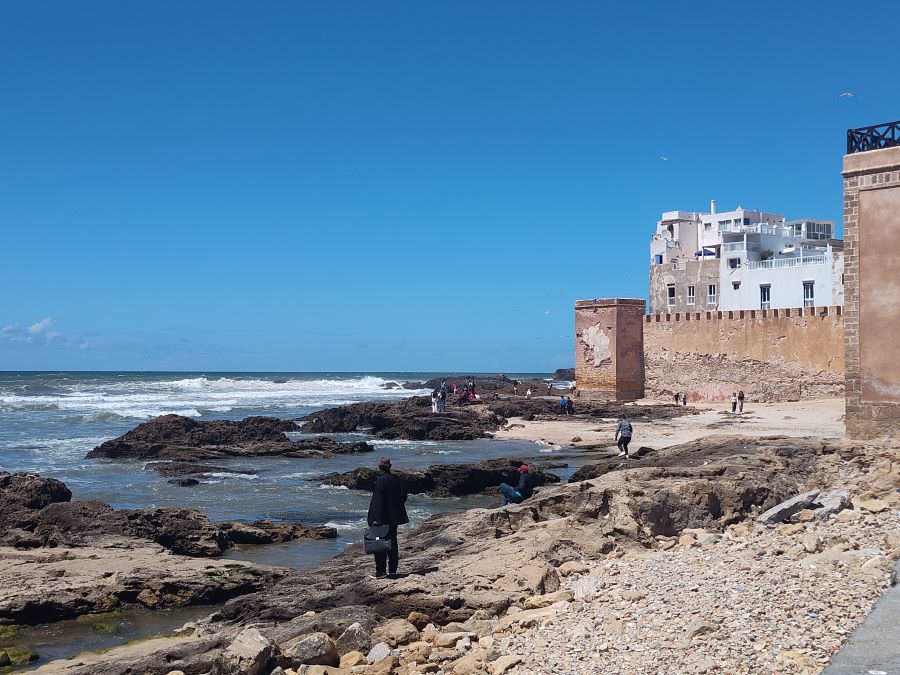
A little history to Essaouira
Essaouira, a coastal city on Morocco’s Atlantic shore, has a rich history shaped by its strategic position and cultural diversity. Originally known as Mogador, the site has been inhabited since prehistoric times and served as a Phoenician and later a Roman trading post. In the 18th century, Sultan Sidi Mohammed ben Abdallah commissioned the French architect Théodore Cornut to design the modern city of Essaouira (founded around 1764), creating one of the first planned cities in North Africa. Its fortified medina, blending Moroccan and European architectural styles, became a key port linking sub-Saharan Africa, Europe, and the Americas in the trade of goods such as gold, spices, and slaves. Over the centuries, Essaouira has also been a melting pot of Berber, Arab, Jewish, and European influences, contributing to its distinctive character and vibrant artistic spirit seen today.

Why you should visit Essaouira?
You should visit Essaouira for its unique blend of history, culture, and natural beauty that captures the essence of coastal Morocco. The city’s UNESCO-listed medina is a charming maze of whitewashed walls, blue doors, and bustling souks where artisans craft woodwork, jewelry, and textiles. Unlike the hectic pace of larger Moroccan cities, Essaouira offers a relaxed and friendly atmosphere, perfect for wandering or simply soaking in its seaside charm. The windswept beaches are ideal for surfing, kitesurfing, and long sunset walks, while the fresh seafood and lively music scene—especially the annual Gnaoua World Music Festival—reflect the town’s creative soul. With its mix of culture, history, and laid-back coastal vibes, Essaouira is a refreshing escape and one of Morocco’s most enchanting destinations.
I really love visiting this city and it is so much more authentic and lived in compared to busy Marrakesh. There’s plenty to see and do here and underneath all the main tourist attractions, you’ll still get to see and enjoy everyday life, the active markets and hang out spots that locals enjoy in the area.

How to get to Essaouira
Getting to Essaouira is fairly easy, whether you’re traveling from within Morocco or arriving from abroad. The city is served by Essaouira-Mogador Airport (ESU), located about 17 kilometers southeast of the city, with regular flights from major Moroccan cities like Casablanca, as well as seasonal international flights from Europe. Many visitors also reach Essaouira by road, as it’s around 2.5 hours from Marrakech and about 3.5 to 4 hours from Agadir. Comfortable CTM and Supratours buses run daily routes connecting these cities, offering an affordable and scenic journey through the Moroccan countryside. For more flexibility, travelers can rent a car or hire a private transfer, enjoying the freedom to stop at coastal viewpoints or traditional argan oil cooperatives along the way.
How many days in Essaouira
You can easily do Essaouira as a day trip from Marrakesh and see all the highlights, but if you dig in and stay a weekend or longer, you’ll really get to explore more time to enjoy and explore this historic city and many attractions and you’ll geta better the vibe of the place. I found so many unique places to visit and just wander and happen upon that it is easy to spend a few days and up to a week depending on how active you are or if you like a more relaxed and casual way of exploring the city.
I would say a minimum of three days is perfect but if you are pressed for time, consider any of the group trips that I will mention below to take and really get a good overview of the Unesco site and attractions.

Top attractions and places to visit
Here are the key historical & cultural attractions to see in Essaouira
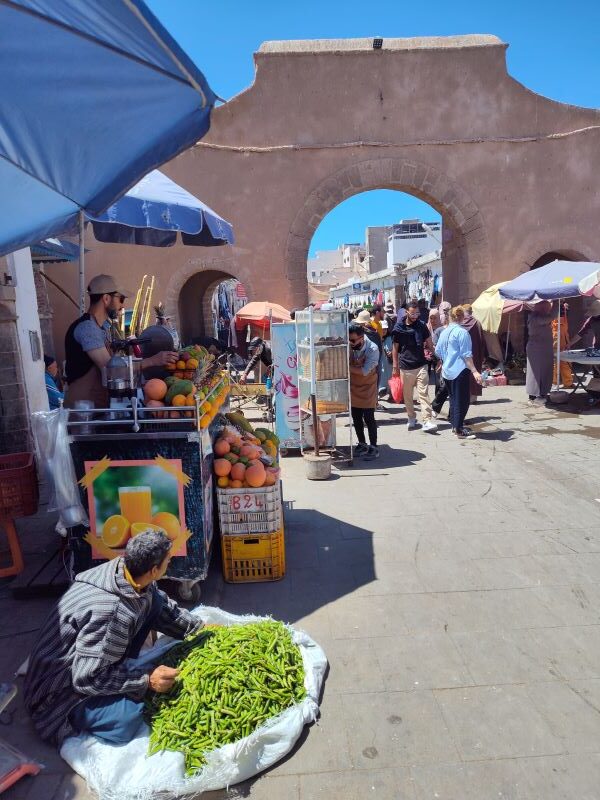
1. Medina of Essaouira (UNESCO World Heritage Site)
The Medina of Essaouira, a UNESCO World Heritage Site located on Morocco’s Atlantic coast, is a beautifully preserved example of an 18th-century fortified port town. Designed by French engineer Théodore Cornut under Sultan Sidi Mohammed Ben Abdallah, the city harmoniously blends European military architecture with North African urban traditions. Its distinctive blue-and-white buildings, narrow winding streets, and bustling souks reflect a unique cultural fusion shaped by centuries of trade between Africa, Europe, and the Americas. Surrounded by impressive sea walls and overlooking the Atlantic, Essaouira’s medina remains a vibrant center of art, music, and craftsmanship, embodying the spirit of an open, multicultural maritime city.
- Walled old town with whitewashed buildings and blue doors.
- Blend of Moroccan and European architecture.
- Narrow alleys filled with artisan shops, galleries, and cafés

2. Skala de la Ville (The Ramparts)
The Skala de la Ville, also known as the Ramparts of Essaouira, is one of the city’s most iconic landmarks, offering sweeping views of the Atlantic Ocean and a tangible link to its maritime past. Built in the 18th century to defend the Medina from naval attacks, the Skala is a striking example of European-inspired military architecture adapted to a Moroccan coastal setting. Its robust stone walls, watchtowers, and rows of weathered bronze cannons—many cast in Seville—stand as reminders of Essaouira’s strategic importance as a fortified port. Today, the ramparts attract visitors for their dramatic seascapes, picturesque vistas of crashing waves, and the vibrant artisans’ workshops lining the nearby rampart walkways, where local craftsmen carve intricate works from thuya wood.
- Historic sea bastion with cannons facing the Atlantic.
- Offers panoramic views of the ocean and Medina.
- Popular filming location (featured in Game of Thrones).
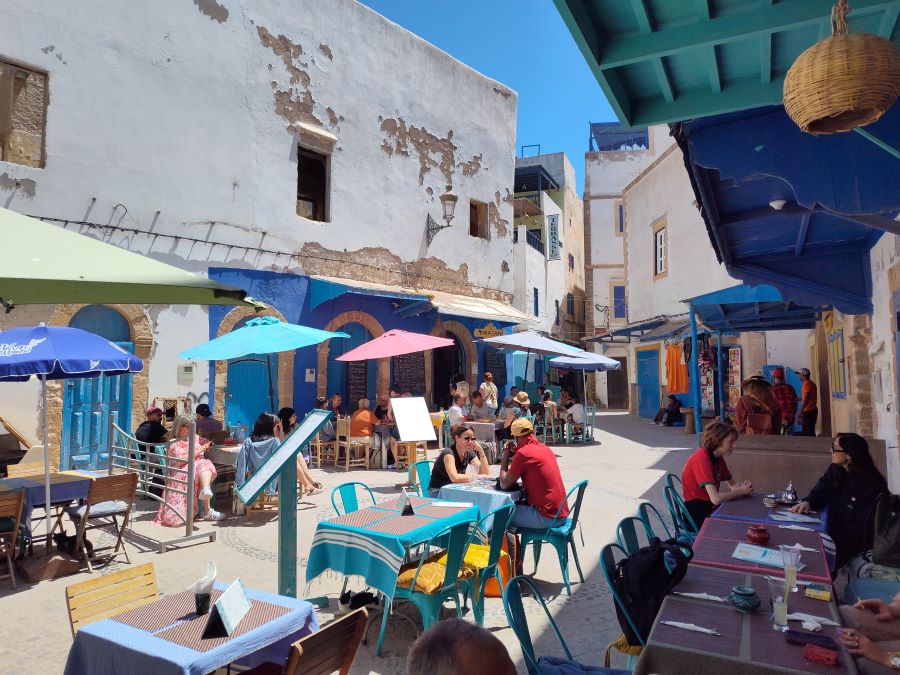
3. Mellah (Old Jewish Quarter)
The Mellah of Essaouira, the city’s old Jewish quarter, offers a poignant glimpse into the town’s once-flourishing multicultural past. Established in the late 18th century under Sultan Sidi Mohammed Ben Abdallah, it was home to a vibrant Jewish community that played a vital role in Essaouira’s commerce and craftsmanship, particularly in trade between Africa and Europe. The quarter is characterized by its narrow, maze-like streets, distinctive architecture with ornate doorways, and remnants of synagogues and Jewish homes that tell stories of coexistence and cultural exchange. Though many residents left in the mid-20th century, restoration efforts today are helping preserve the Mellah’s historical and spiritual legacy, making it an evocative space that reflects Essaouira’s enduring identity as a crossroads of faiths and cultures.
- Reflects Essaouira’s Jewish heritage.
- Includes old synagogues and restored historic homes.
4. Musée Sidi Mohamed Ben Abdallah
The Musée Sidi Mohamed Ben Abdallah, housed in a beautifully restored 19th-century riad in the heart of Essaouira’s medina, is the city’s principal museum dedicated to preserving and showcasing its rich cultural heritage. Named after the city’s founder, Sultan Sidi Mohamed Ben Abdallah, the museum features a diverse collection of artifacts that reflect Essaouira’s artistic, historical, and ethnographic traditions. Its exhibits include traditional musical instruments, Berber jewelry, intricate wood carvings, embroidered textiles, and archaeological finds that trace the region’s long history of trade and cultural exchange. The elegant architecture of the museum itself—with its central courtyard, carved plasterwork, and zellij tilework—enhances the visitor experience, offering a serene setting in which to explore the diverse influences that have shaped Essaouira’s identity over the centuries.
- Cultural museum in a former 19th-century mansion.
- Exhibits traditional music instruments, costumes, and crafts.
Coastal & Outdoor Attractions

1. Essaouira Beach
Essaouira Beach stretches along Morocco’s Atlantic coast as a wide, golden expanse framed by steady ocean winds and the town’s whitewashed skyline. Known for its breezy, laid-back atmosphere, it’s a favorite spot for windsurfing, kitesurfing, and horseback or camel rides along the shore. The beach offers panoramic views of Mogador Island and the city’s historic ramparts, making it as scenic as it is active. Visitors can unwind at beachfront cafés and restaurants such as Ocean Vagabond, a relaxed surfside spot known for its fresh seafood and Mediterranean dishes, or Beach and Friends, a popular hangout for sunset cocktails and grilled fish. With its combination of natural beauty, gentle surf, and bohemian charm, Essaouira Beach perfectly captures the city’s coastal allure and easygoing spirit.
- Wide sandy beach stretching for miles.
- Ideal for walks, camel rides, and sunset views.
- Popular for kite surfing and windsurfing due to strong winds.
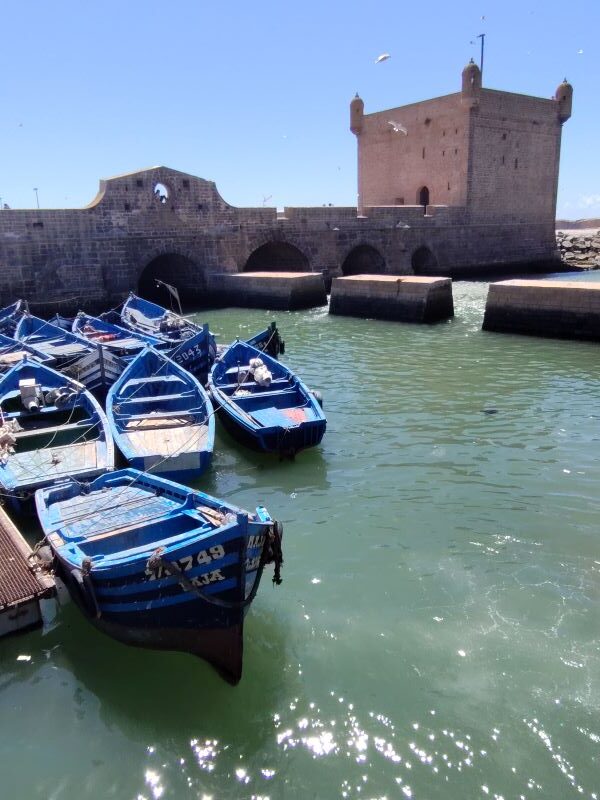
2. Port of Essaouira (Skala du Port)
The Port of Essaouira, also known as the Skala du Port, is a vibrant and historic harbor that has been the lifeblood of the city since the 18th century. Built under Sultan Sidi Mohamed Ben Abdallah, the port was once a major hub for international trade connecting Africa, Europe, and the Americas. Today, it remains an active fishing port and one of Essaouira’s most atmospheric sights. Visitors can watch fishermen unload their colorful blue boats, explore the old stone ramparts and watchtowers that once guarded the harbor, and climb to the top of the bastion for panoramic views of the Atlantic Ocean and the city’s skyline. The nearby fish market offers an authentic local experience—where freshly caught seafood can be chosen and grilled on the spot at small open-air stalls—while the rhythmic bustle of seagulls, sea spray, and boat repairs brings the port’s maritime spirit vividly to life.
- Bustling fishing port near the ramparts.
- Watch fishermen unload their catch and seagulls hover overhead.
- Fresh seafood stalls and traditional blue boats.

3. Diabat Village
Diabat Village, located just a few kilometers south of Essaouira, is a tranquil coastal hamlet known for its laid-back charm and bohemian spirit. Once a favorite retreat for musicians and artists in the 1960s—including legends like Jimi Hendrix, who is said to have visited—the village still carries a relaxed, creative atmosphere. Overlooking sweeping dunes and the mouth of the Oued Ksob River, Diabat offers views of the ruined Bordj El Berod, a crumbling 18th-century watchtower often associated with local legends. Today, visitors come to Diabat for camel and horse rides along the beach, peaceful walks through the dunes, and cozy guesthouses and cafés that serve traditional Moroccan dishes in a serene setting. It’s a perfect escape from Essaouira’s bustle, blending nature, history, and a touch of musical mythology.
- Small village 3 km south of Essaouira.
- Known for its Jimi Hendrix legend and laid-back atmosphere.
- Good spot for horse riding and quad biking on dunes.
Art, Craft, & Market Experiences
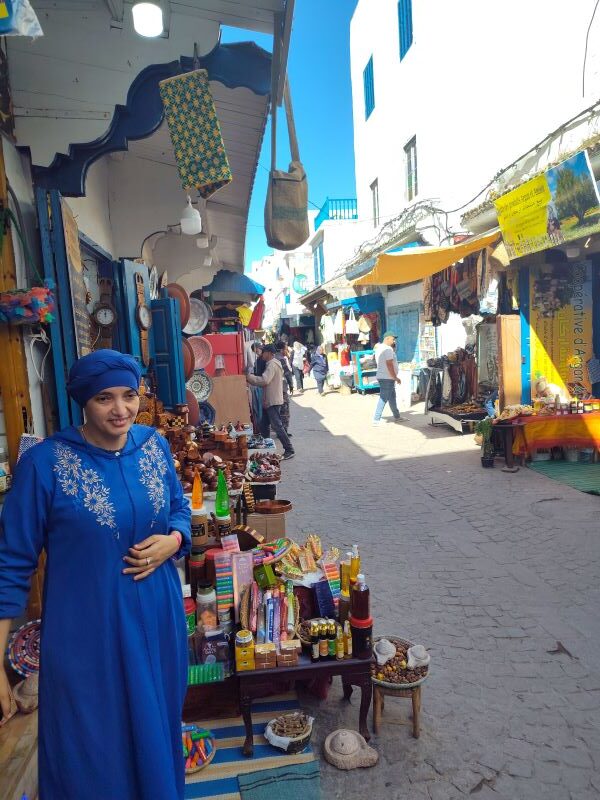
1. Souks of the Medina
The souks of the Medina in Essaouira are a lively maze of narrow streets and vibrant market stalls located at the heart of the walled old town, just a short walk from the main Bab Doukkala and Bab Marrakech gates. Divided into distinct sections by craft and trade, the souks reflect Essaouira’s rich artisan heritage and multicultural roots. Visitors can explore the Souk Jdid (New Market) for spices, olives, and local produce; wander through the jewelry and textile souks for silver Berber ornaments and handwoven fabrics; or browse workshops in the woodcarvers’ quarter, where artisans shape beautiful creations from fragrant thuya wood. The markets are smaller and more relaxed than those in Marrakech, offering a welcoming atmosphere ideal for browsing and conversation. With their mix of colors, scents, and sounds, the souks capture the essence of Essaouira’s coastal charm and creative soul.
- Organized by craft type (woodwork, spices, jewelry, textiles).
- Great place to buy thuya wood carvings and argan oil products.
2. Art Galleries
Essaouira is renowned for its thriving art scene, and one of its most notable venues is Galerie d’Art Damgaard, located near the Skala de la Ville, just off Place Moulay Hassan at the entrance to the medina. Founded by Danish collector Viggo Damgaard, the gallery has been a cornerstone of Essaouira’s artistic identity since the 1980s, showcasing works by prominent local and regional artists, particularly those from the Gnaoua and naïve art traditions. The collection features bold, colorful paintings that reflect the city’s mystical atmosphere, musical heritage, and African influences. Other nearby galleries, such as Galerie La Kasbah and Galerie Othello, also highlight contemporary Moroccan art in beautifully restored medina buildings. Together, these spaces form a vibrant artistic circuit that celebrates Essaouira’s reputation as one of Morocco’s most creative and culturally expressive cities.
- Numerous contemporary and traditional art spaces (e.g., Galerie la Kasbah, Espace Othello).
- Showcase Essaouira’s vibrant art scene.
Spiritual & Architectural Landmarks
1. Mosque Ben Youssef
The Ben Youssef Mosque in Essaouira is one of the city’s most significant religious landmarks, located near the heart of the medina close to Bab Marrakech. Built in the 18th century under Sultan Sidi Mohamed Ben Abdallah, the mosque is named after the revered Islamic scholar and saint Sidi Ben Youssef. It stands out for its elegant whitewashed walls, traditional Moroccan tilework, and serene courtyard that reflects classic Saadian-era architectural influences. As with most mosques in Morocco, entry is reserved for Muslim worshippers only, so non-Muslim visitors cannot enter the prayer hall. However, visitors can admire the mosque’s graceful exterior, hear the call to prayer echoing through the medina, and observe daily life unfolding around it—offering a meaningful glimpse into Essaouira’s spiritual and communal rhythms.
- Prominent religious site in the Medina.
- Example of traditional Moroccan Islamic architecture.

2. Synagogue Slat Lkahal
The Synagogue Slat Lkahal, located in the heart of Essaouira’s Mellah (the old Jewish quarter), is one of the city’s most evocative reminders of its once-thriving Jewish community. Built in the 19th century through donations collected by local Jewish families, it served as a communal place of worship and education for those unable to afford membership in larger synagogues. Modest yet deeply atmospheric, Slat Lkahal features restored prayer halls, Hebrew inscriptions, and exhibits that recount the history of Jewish life in Essaouira. Today, it functions as both a heritage site and a symbol of coexistence, welcoming visitors of all faiths who wish to learn about the city’s pluralistic past. The synagogue’s peaceful ambiance and careful restoration make it a moving testament to Essaouira’s enduring spirit of tolerance and cultural exchange.
- Recently restored synagogue reflecting Essaouira’s multicultural past.
Festivals & Cultural Events
1. Gnaoua World Music Festival (June)
- Celebrates Gnaoua (Afro-Moroccan) music, jazz, and fusion genres.
- Attracts international artists and large audiences.
Nature & Surroundings
1. Argan Tree Forests
- Located east of Essaouira; home to the famous “goat trees.”
- Guided tours to argan oil cooperatives.
2. Sidi Kaouki
- Peaceful beach village 25 km south of Essaouira.
- Popular for surfing, camel rides, and local eateries.

Other tips to visiting Essaouira
General Preparation
A. Best Time to Visit
1. Spring (March–May) and Fall (September–November) offer mild temperatures.
2. Summer can be windy and cooler than expected due to Atlantic breezes.
B. What to Pack
1. Layers — temperatures vary between day and night.
2. A light windbreaker — Essaouira is known as the “Windy City of Africa.”
3. Comfortable walking shoes — for cobbled medina streets.
4. Modest clothing — respectful of local culture.
Getting There and Around
A. Transportation to Essaouira
1. Bus from Marrakech (3–3.5 hours via Supratours or CTM).
2. Private car or shared taxi option.
3. Small airport with limited flights (domestic and seasonal European routes).
B. Getting Around Essaouira
1. Medina is compact — best explored on foot.
2. Petit taxis available for short trips outside the center.
3. Biking along the beach is popular.
Accommodation Tips
A. Stay in a Riad for traditional charm and local hospitality.
B. Book early during festivals or high season.
C. Choose your location wisely — near the medina for convenience, or near the beach for quiet and views.
Food and Dining
A. Seafood is a must-try — visit the port for fresh grilled fish.
B. Sample local specialties like tagine, couscous, and pastilla.
C. Try a rooftop café for scenic sunsets over the ramparts.
D. Carry small change for tipping or smaller establishments.
Shopping and Souvenirs
A. Buy local handicrafts — thuya woodwork, textiles, and argan oil.
B. Negotiate prices politely — bargaining is expected but friendly.
C. Check quality of argan oil and crafts before buying.
Cultural Etiquette
A. Ask before taking photos of people, especially locals.
B. Respect prayer times — some shops may close briefly.
C. Use French or basic Arabic phrases — locals appreciate the effort.
Safety and Practical Tips
A. Essaouira is generally safe — just beware of pickpockets in crowded areas.
B. Watch for wind and waves if swimming or surfing.
C. Carry cash — some small shops and riads don’t accept cards.
D. Avoid touts offering “free” tours or overly cheap excursions.
Experiences Not to Miss
A. Explore the medina and ramparts.
B. Walk along the beach or try kite-surfing.
C. Visit the port at sunset.
D. Listen to live Gnawa music in cafés or festivals.
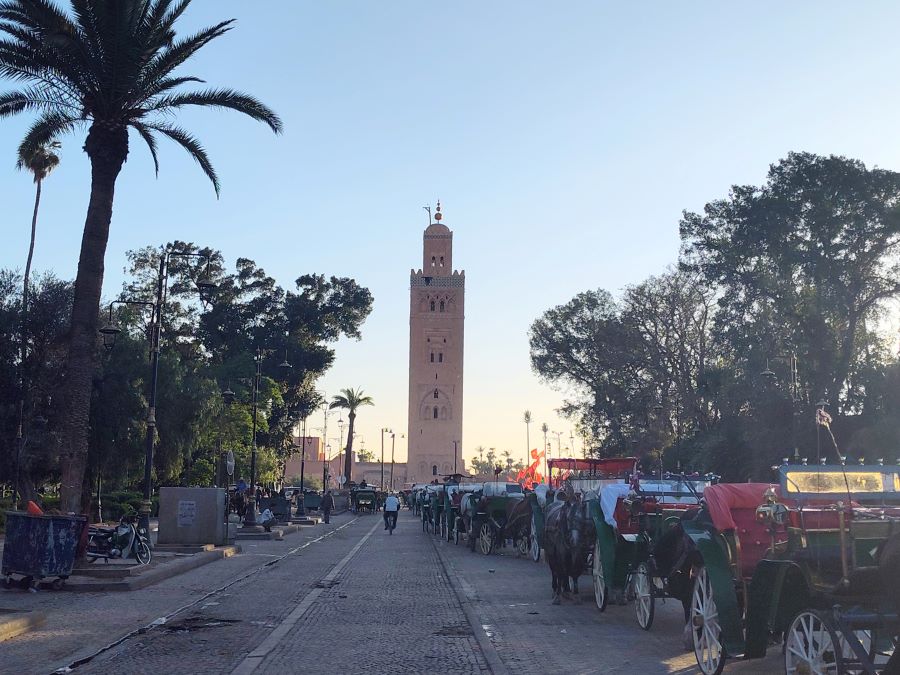
Further Reading – exploring Morocco
Explore the Souks of Marrakesh
Explore the Medinas of Morocco
A visit to Tangier Kasbah Museum
A visit to Rabat, things to do

Conclusion to visiting Essaouira
In conclusion, visiting Essaouira offers a truly unforgettable experience — a harmonious blend of culture, history, and natural beauty. From its charming blue-and-white medina and vibrant souks to the rhythmic sound of waves along its golden beaches, Essaouira captivates every traveler with its laid-back charm and artistic spirit. Whether you’re exploring the ancient ramparts, savoring fresh seafood by the port, or watching the sunset over the Atlantic, this coastal gem leaves you with lasting memories of Morocco’s serene side. Don’t wait — plan your journey to Essaouira today and let its ocean breeze and timeless charm rejuvenate your soul.

About author – Noel Morata
After relocating from the United States to Andalusia in 2024, I’ve made it my mission to discover every corner of Spain along with many Mediterranean locations, cities and attractions. Based just east of Granada, I’ve spent a lot of time visiting Morocco including multiple extended visits to Marrakesh, Tangier, Chefchaoen and different parts of the country throughout different seasons. My background in history cultural studies and years of residence and exploring all of the Mediterranean countries have given me unique insight into the region’s historical significance, local customs, and culinary traditions.
Essaouira is definitely one of my favorite cities to visit in Morocco – it’s more relaxed and casual, amazing local seafood and specialty dishes, fantastic shopping and a historic medina and Unesco landmarks to explore.
I regularly update my guides with the latest information gathered through personal visits and relationships with local tourism officials, always seeking what’s new and exciting in each destination. As a self-proclaimed foodie, I’m passionate about discovering authentic local markets and regional specialties.



